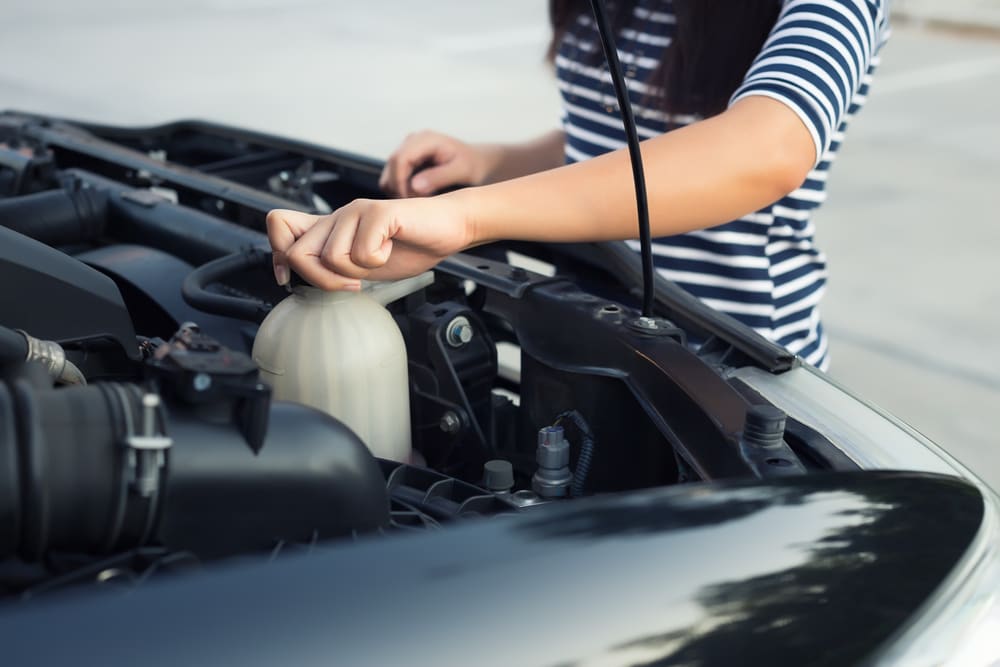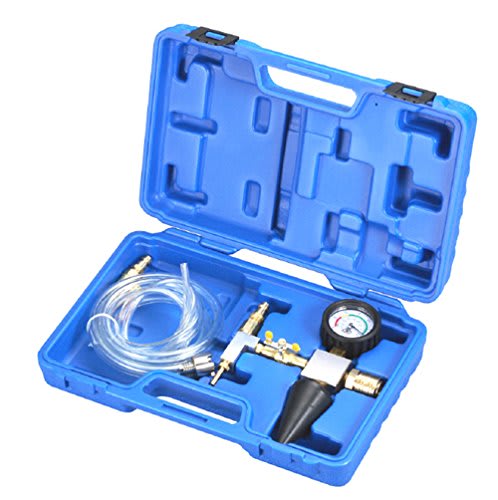

One of the most difficult problems to identify when diagnosing an overheating situation is air bubbles that are trapped in the coolant system. The coolant system of any water-cooled engine is dependent upon the smooth and clear flow of coolant within the engine block water jackets, coolant lines, water pump, and radiator. Air bubbles may appear inside the coolant system, which increases internal engine temperature; and if not fixed quickly, could result in serious engine damage.
Air bubbles sometimes arise during the time that mechanics perform coolant service. If not taken care of properly, potential serious damage may occur. To solve this, many experienced ASE certified mechanics utilize the vacuum coolant filler and dub it the best tool to eliminate air bubbles during radiator or coolant service and repairs.

What is vacuum coolant filler?
After a mechanic has completed routine coolant or radiator service, it is common for them to add coolant to the overflow reservoir in an effort to "top off the tank". However, doing so could result in potentially dangerous situations of creating air bubbles inside the coolant system. The vacuum coolant filler is designed to eliminate this by creating a vacuum that removes all bubbles trapped in the line, then adds coolant to the vacuum sealed coolant system. The tool itself is a pneumatic device that includes an attachment that is secured to the overflow reservoir cap. There are multiple attachments available, so a mechanic would need to order several of them to fit most US and foreign applications.
How does the vacuum coolant filler work?
The vacuum coolant filler is an exceptional tool that can prevent air bubbles from being trapped inside the coolant system or remove bubbles that currently exist. However, in order to work correctly, the mechanic should follow specific instructions supplied by the tool manufacturer (as each individual vacuum coolant filler has specific instructions regarding care and use).
Here are the basics on how vacuum coolant fillers work:
- The mechanic finishes any repairs or service to the coolant system, or diagnoses and repairs any mechanical issues that lead to overheating.
- Before adding coolant, the mechanic uses the vacuum coolant filler to remove any existing air trapped inside the coolant system.
- Once the vacuum coolant filler is secured to the overflow reservoir, it is activated and a vaccuum is created. Any air bubbles or debris stuck inside the coolant system will be sucked away through lines, chambers and into the reservoir.
- The device remains activated until a vacuum pressure ranging between 20 to 30 psi is achieved.
- Once the vacuum pressure stabilizes, the airline is reversed and a coolant refill tube is inserted into a container of pre-mixed coolant.
- The mechanic releases the valve and slowly adds coolant to fill the system – without adding any air bubbles to the system.
- When the coolant tank is filled to the recommended level, the air supply line is disconnected, the reservoir top attachment is removed and the cap is replaced.
Once a mechanic has completed this process, all air bubbles should be removed from the coolant system. The mechanic then makes sure to inspect for any leaks to the coolant system, starts the engine, verify the coolant temperature and test drives the vehicle.
When you're able to easily remove air bubbles in the coolant system of any vehicle by using vacuum coolant fillers, many overheating situations can be avoided. If you’re a certified mechanic and you’re interested in working with YourMechanic, submit an online application for an opportunity to become a mobile mechanic.



